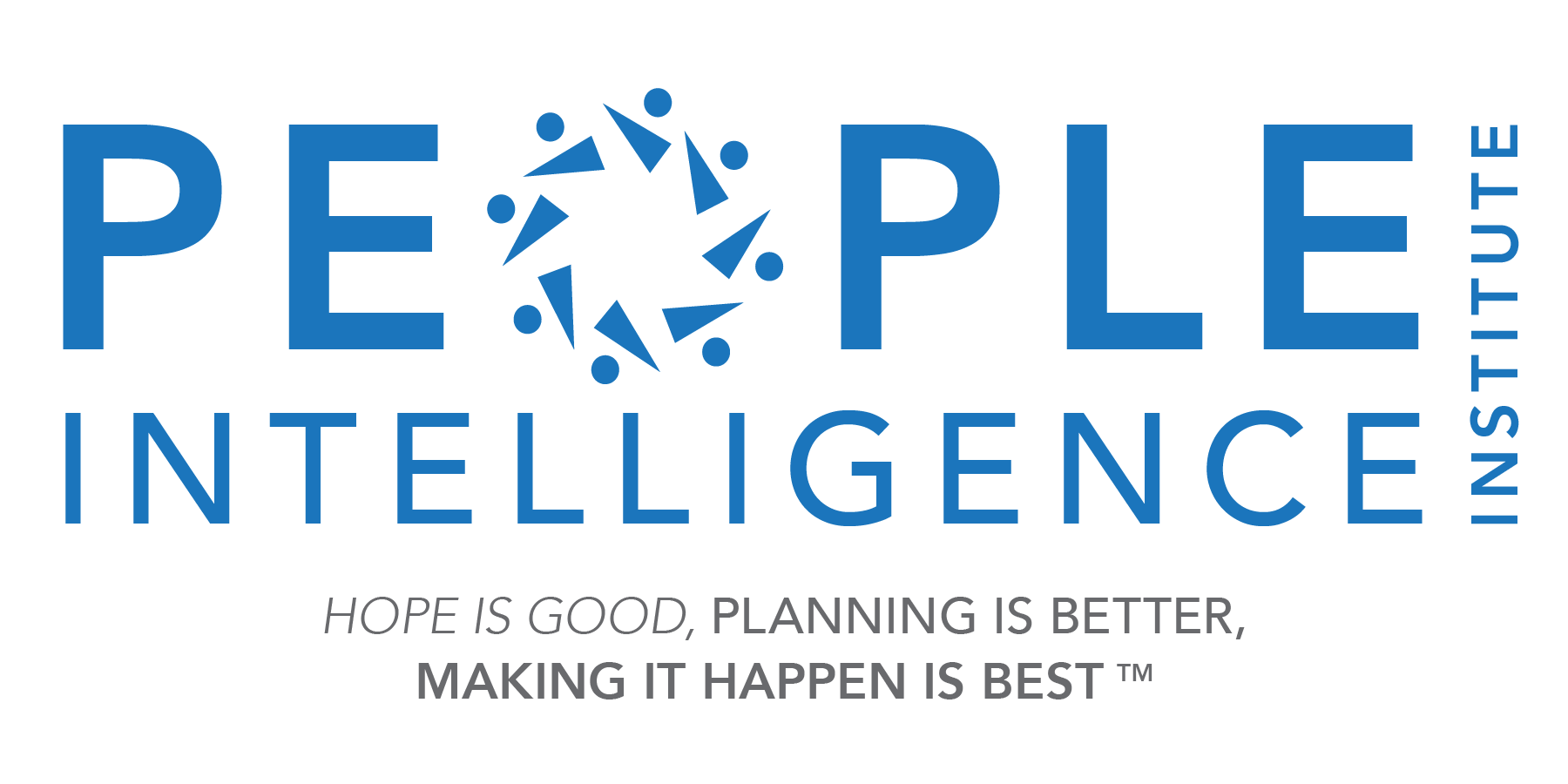"This course has helped train my eye and my mind to see more emotions in others, and as a result, have more successful interactions with others when they are emotional. I am more likely to notice things earlier, before escalation, when the potential to make better choices is stronger."
Read MoreCan you really feel your way to success?
The Emotional Skills & Competencies (ESaC) courses have brought together an impressive group of delegates with so many unique backgrounds, cultures and experiences. From entrepreneurs to seasoned IT managers to high level HR recruiters and consultants to psychologists and therapists, to financial advisors and recent college graduates just starting off on their professional careers. Each person successful in their own right - and each recognizing that emotional awareness is a crucial part in their ongoing personal and professional development journey.
Psychologist Dr. Carey Cherniss from Rutgers University, published a study citing a 19 point business case for emotional intelligence. Here are a few highlights from the paper and how emotional intelligence qualities differentiate sucessful performers:
- How well executives handled their own emotions determined how much people around them preferred to deal with them.
- The most successful recruiters in the US Airforce scored significantly higher in emotional intelligence competencies.
- Financial advisors of managers trained in emotional skills outperfomed (grew business by 18.1%) the financial advisors who worked under untrained managers (grew business by 16.2%).
- Employee retention was higher when selected for emotional competencies. In addition performance was significantly better. The executives selected tended to perform in the top third based on salary bonuses for performance.
- Accurate self-assessment was associated with superior performance.
One of the things that we often fail to realize is that emotional awareness is a skill, just like technical know-how is a skill that is built over time with experience and training. We can build upon each emotional competency to improve our emotional lives by realizing the impact that our emotions and the emotions of others have on our performance and using it mindfully and responsibly to nurture relationships that are at the core of business, family and friendships.
There are four skills to improving emotional awareness and intelligence, that leading psychologist and researcher Dr. Paul Ekman outlined in his book Emotions Revealed after more than 40 years of research into emotion. Each of these skills is a piece of the foundation for emotional competencies:
1. Increasing self-awareness of when we are becoming emotional.
One of the hardest skills to develop but also one of the most rewarding. Having emotional self-awareness allows us to build-in an opportunity for choice about when you are emotional. While we cannot stop ourselves from becoming emotional, we can choose how to act and how to channel that energy into a constructive reaction.
2. Choosing how you behave when you are emotional.
Emotional reactions can either be constructive or destructive. While emotions have evolved to help us deal with situations that need quick reaction without thinking - sometimes they get us into trouble. There are times when our emotions get in the way of collaboration. Often, it is only after the episode that we realize the damage they have caused.
3. Increasing awareness of the emotions of others.
Sensitivity to the emotions of others and having the insight and awareness to respond to the emotions of others forms stronger bonds and connections. Both verbal and nonverbal channels offer rich cues to another persons emotional state.
4. Using the information we have about others wisely.
Sometimes people prefer to hide how they are feeling. Despite their best efforts, emotions can leak - usually through facial expressions. The information provided unbeknownst to the person needs to be handled with care. Responding appropriately to what we see is key. This is where empathy plays an important role and the ability to respond effectively to build stronger and more productive relationships.
The great news is that our emotional competencies can be developed and improved, but the intention must be there. Armed with the 4 core skills and the knowledge, provides the foundation for immediate application. Increase your EQ and start inspiring!
Universality Challenged: Facial Expressions of Emotions not Culturally Universal?
A recent study has been carried out by Lisa Feldman Barrett that is attempting to gain attention to her work in the field of universality of emotion. Unfortunately the research efforts were misdirected as they only looked at one aspect of the ability of an isolated Himba tribe in Namibia, South Africa; the ability to recognize emotional expressions. The outcomes of that study were then used to challenge Paul Ekman's findings that emotions are universally expressed. There have been over 75 studies that have demonstrated that these very same facial expressions are produced when emotions are elicited spontaneously (Matsumoto, Keltner, Shiota, Frank, & O'Sullivan, 2008). Ironically this was published in the Handbook of Emotions in p215 (2008) – edited by Lisa Feldman Barrett et al. This is a serious disconnect that good research should have addressed. This seems to have been supported by the rejection of the Namibia study by the respected journal, Science.
Barrett reported in July 2013 to Shannon Fischer, in a Boston Magazine interview that "Clearly people don't give a shit about data, because if they did, I wouldn't have this battle on my hands." Maybe the data needs to connect with more relevance to the claims made.
Extract from the Barrett article: "Barrett recently decided to take on Ekman's ideas directly, by sending a small research team to visit the isolated Himba tribe in Namibia, in southern Africa. The plan was this: The team, led by Maria Gendron, would do a study similar to Ekman's original cross-cultural one, but without providing any of the special words or context-heavy stories that Ekman had used to guide his subjects' answers. Barrett's researchers would simply hand a jumbled pile of different expressions (happy, sad, fearful, angry, disgusted, and neutral) to their subjects, and would ask them to sort them into six piles. If emotional expressions are indeed universal, they reasoned, then the Himba would put all low-browed, tight-lipped expressions into an anger pile, all wrinkled-nose faces into a disgust pile, and so on. It didn't happen that way. The Himba sorted some of the faces in ways that aligned with Ekman's theory: smiling faces went into one pile, wide-eyed fearful faces went into another, and affectless faces went mostly into a third. But in the other three piles, the Himba mixed up angry scowls, disgusted grimaces, and sad frowns. Without any suggestive context, of the kind that Ekman had originally provided (see Emotions Revealed), they simply didn't recognize the differences that leap out so naturally to Westerners." http://www.bostonmagazine.com/news/article/2013/06/25/emotions-facial-expressions-not-related/4/
The Ekman hypothesis that 'facial expressions of emotion are not culturally universal' is about the display of the emotion. The universality hypothesis does not claim that all humans perceive, describe or represent emotions universally – the universality hypothesis is to do with the argument that the basic internal human emotions (i.e., happy, surprise, fear, disgust, anger, sad – and latterly contempt) are expressed using the same facial movements across all cultures. The Barrett study seeks to evaluate subjective judgements of facial expressions of emotions and this injects a major contaminant. This alone is reason enough to reject the claim of the Barrett research.
Paul Ekman's research focuses on those displays which happen, unbidden, as a result of experiencing an emotional episode. We know from the extensive research over the last 40 years that facial expressions of some (7) emotions are displayed universally across cultures, sometimes without consciousness, though they are not always judged accurately. Nor can they be always reconstructed consistently. For example, when some people are asked to draw or imitate a sad face, a common expression we see in the Emotional Intelligence Academy consists of pursed lips, tight eyelids and brows down – similar to when a child sulks. Yet genuine felt sadness is universally displayed with inner brows up, relaxed eyelids and mouth corners down – the first and the third components here being very hard to manipulate at will by most people who are not experiencing sadness. This helps to explain why the Himba tribe members 'mixed up the angry scowls, disgusted grimaces, and sad frowns' when asked to group photographs into piles. Maybe if the researchers had used emotion-based, 'context heavy stories' (e.g. 'a child has died'; 'friends have come') and then photographed the expressions on the faces of the tribe members then this research may have contributed more directly towards the universal display argument.
So has this study helped to stimulate debate? – Yes. Does it successfully argue that 'facial expressions of emotion are not culturally universal' – No. What it might do is help to describe the differences in ability to perceive displays of emotion in certain cultures – though these are not necessarily connected with the evolved, unbidden, facial expressions of emotion that good research has shown to be universal.
Cliff Lansley (March 2014)
Posted from: http://www.emotionintell.co.uk/facial-expressions-of-emotions-are-not-culturally-universal/#sthash.tVZiTa7N.dpuf
The Architecture of Emotional Competency

"All architecture is a shelter, all great architecture is the design of space that contains, cuddles, exalts or stimulates the persons in that space." - Phillip Johnson
So what kind of space have you created for your employees? Is it one where individuals are physically isolated from one another, making human contact a chore? Are they essentially detached from the process in the place of business, segregated in the name of focus?
The idea that the space is either evocative, inspiring, creative and interactive; or is compartmentalized, inhibitive, cold and foreboding, can speak less to the physical space and more to the leadership that influences the dynamic within that space. The leadership can function as the architects of the kind of space where employees either flourish or whither.
Steven Johnson, in his book, "Where Good Ideas Come From", explains how the coffee houses of 17th-century England fostered the Age of Enlightenment. It was the space - the chaotic, communal atmosphere that lent itself to the emotionally open and honest exchange of ideas. Johnson examines the impact the coffee houses had upon the advancement of western culture and civilization. The coffee houses were the places where ideas could, well, percolate. The best ideas develop over time. They are a bundle of smaller ideas that need time to gestate and a place to be born.
Ideation, the formation of ideas, is a process, like an architectural drawing on a cocktail napkin that becomes a functional piece of art. It begins with free expression. In a space where people feel free to be honest and uninhibited, creativity and innovation will blossom.
The idea of place is not simply about steel and concrete, but about creating an open dialogue. Open space engenders open minds - for ideas, congeniality, innovation and forward-thinking. Just as the principal's office can spark dread in a schoolboy, a work space seen as open to new ideas and truthful human interaction can relieve the stress that stifles imagination.
Eugene Kohn of KPF Architecture spoke about what goes on inside of buildings. "Our goal as architects is to create buildings that inspire people to do whatever it is in that space they need to do. That inspiration comes from within the building as much as from the way it looks from the outside." And so it goes for the attitude projected by management. Are you creating corrals or space to grow?
Architecture in both the practical and artistic sense is a process, indeed the only art form in which the developmental stages (blueprints, drawings, models) are revered along with the finished product. Human interaction is a process of exposition, the testing of ideas and knowledge; its application and review, none of which can happen if employees aren't part of the process and managers aren't attuned to the needs of the work force.
Employees need to feel comfortable in the place and view it as common ground, which will propagate a sense of ownership. In this place, the connections all play a role, as each rivet in the steel supports the structure.
In his elegant book, Why Architecture Matters, Paul Goldberger said, "Architecture is about the making of place, and the making of memory. Architecture gives us joy if we are lucky, and it gives us satisfaction and comfort, but it also connects us to our neighbors, since the architecture of a town or a city is the physical expression of common ground. It is what we share, if only because the architecture of a community is one of the few forms of experience that everyone partakes in: the sharing of place."
The art of architecture is obvious, as is the public face of an organization. But in buildings as well as organizations, the underlying structure supports the mission. Complex interfacing systems keep structures functioning as do complicated human interactions, of which leaders must remain keenly aware. To say the full business process is effective without emotional intelligence is like an architect neglecting an essential structural element. The architect gives equal gravitas to aesthetics and function. It all matters.
Image courtesy of khunaspix / FreeDigitalPhotos.net
Cleaning Out the Attic

Managers often operate under the presumption that emotions have no place at work and they are generally right with regard to financial or economic decisions and operational maneuvers. However, their employees are sentient beings. Emotions and the role they play in the human factor cannot be dismissed.
Whether or not we want to acknowledge them, emotions exist because people exist. They are part and parcel of every person we know. Managers feel they have to be disconnected, so that the detachment can make it easier to make decisions based upon facts, devoid of emotion. That perspective has merits of course but there is a pitfall: the complete repression of all emotions while in work mode. It leads to neglecting emotion in all work-related interactions and can prevent them from 'getting' the human component of the work environment. In short; it interferes with empathy.
Think about the difference empathy makes in our interpersonal relationships - in how we decide to talk to people, how much we decide to listen, how deeply we care. There is an emotional component underpinning every action people take and by tapping in to our emotional intelligence, that enhanced sense of empathy will make us better managers of people. By denying our own emotions we are inhibiting our ability to notice them in others. If we don't understand them, we can't understand motivation, desire, inspiration, commitment and honesty. Is the team really buying into the plan or just paying lip service?
Do you ever feel as though you aren't getting through to people? Have you noticed that employees only come to certain managers with their concerns? Do employees complain at reviews that they don't feel as of they matter? It may be time to clean out the attic...
It's Musty Up Here
Maybe it's time to get up in the attic and dust off your old trophies, read your old journals, sift thru some photos and enjoy the memories, those moments in time that have shaped your life - the laughter, and even the tears. What moments brought you the greatest joy? What single event can still make you feel exhilarated?
How would a trip to the attic make you feel? Might you feel rejuvenated, humble, romantic, artistic and perhaps, human? Your employees feel this way every day and so do their families. The ability to understand how emotions effect change is vital to emotional competency. This competency is an improvable skill those with high EQ possess naturally, but it can be developed with practice.
Some leaders work so hard to remove themselves from emotion in the name of pragmatism they lose the ability to communicate effectively with the very people who can help them make better decisions. They simply forget how to talk to people. The Joe Friday, "just the facts ma'am" approach can leave employees feeling disconnected. That feeling of being under-appreciated or excluded is one of the top reasons for employee discontent.
A trip to the attic can help to find new uses for stored emotions such as confidence, compassion, joy, sadness and connectedness. Revisit Mazlow's Hierarchy of Human Needs ( http://www.maslow.com/) and see how important belonging is. By cultivating empathy, by recognizing and understanding the relevance of emotions in human behavior, leaders can embrace what they find in the attic. They can blow off the dust and put their emotions back in the toolbox, right alongside pragmatism.
Image courtesy of jscreationz / FreeDigitalPhotos.net
Emotional Clarity
 In his memoir, "A Drinking Life", Pete Hamill said drinking takes away two of a writer's most valuable tools, clarity and memory.
In his memoir, "A Drinking Life", Pete Hamill said drinking takes away two of a writer's most valuable tools, clarity and memory.
Clarity is energizing. Clarity is illuminating. Without it your path forward is uncertain, murky and frustrating. Your goals are fuzzy and your optimism almost non-existent. The master motivator Tony Robbins says, "In order to have an extraordinary life you must have an extraordinary psychology." That state requires clarity of purpose. "Clarity is power," Tony declares.
Emotional clarity is a double-bladed plough that cuts through the muck of communication and clears a path for mutual understanding. But like any tool it must be used properly. You must understand its utility and use it intelligently to achieve optimum results. In short; you gotta read the directions.
In a thesis written for Ohio State University in 2007, Samantha Mowrer states that emotional clarity is associated with positive and affective well-being, "...faster rebound from an induced negative mood, adaptive coping styles and affirming attributions for the occurrence of positive events." On the flip side, Mowrer reminds us that poor emotional clarity is negatively related to, "ambivalence over emotional expression, depression, neuroticism, social anxiety and distress" among other downward expressions that leave us vulnerable to skepticism and cynicism.
Ambivalence is demoralizing. Apathy is death to a relationship. Nothing hurts more than when the other person simply doesn't care any longer. Much of what drives work and personal relationships to the brink of disaster is uncertainty - about true feelings, needs, goals and fears. Negative attributes can be upended toward a positive bias with emotional clarity. It's the ability to project a clear message, grounded in mindfulness, attentiveness, compassion and truth. It's knowing 'what' so you can know 'how'.
Like any useful tool, it takes time, effort and purposeful practice to attain a level of expertise. It begins by asking two simple questions: What are emotions? How are they expressed?
In order to self-regulate emotions we have to be aware of what they are. In order to empathize with others we need to recognize how emotions are integral to the manner and meaning of their efforts to communicate. In order to cope, adapt, support, affirm, understand and focus, we must pay attention, not just to words but to totality of expression.
Here's a quick example. One of your engineers has been working on a project that has the potential to double the top line growth of your company. On paper his ideas are sound, innovative and well-constructed. You direct him to present his ideas to a critical client in the presence of the CEO but you are unaware he has an abject fear of public speaking.
The engineer fails miserably. His brain seizes. His ideas are stilted, he cannot answer questions about his design, he seems unsure at best if his ideas have any merit. The whole event is a crushing.
What happens next? Your judgment is seen as faulty. Your ability to spot good ideas and groom talent are brought into question. You wonder aloud if the engineer even developed the idea on his own. You question his integrity. You begin to doubt your own abilities.
Two things went wrong here: the engineer failed to properly communicate his fears and you failed to spot his emotional reaction to your directive to present his concept. Had there been greater understanding and empathy, you would have made the presentation yourself, with your engineer on hand to answer questions. His lack of fear would have kept his mind relaxed and focused on the facts. The presentation would have had a different outcome. So what's the lesson?
Once you understand what emotions are and how they have an impact on your own behavior, you become better at seeing and understanding both the prevalence and relevance of emotions in the behavior of others, how emotions affect relationships, stability, communication and trust. Clarity of emotions is paramount to successful communication. Clarity is exciting. It empowers your way forward.
Image courtesy of David Castillo Dominici / FreeDigitalPhotos.net
